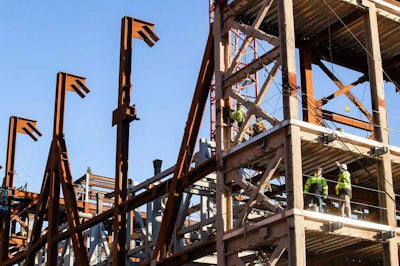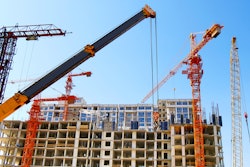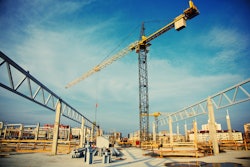
The pandemic shifted almost every aspect of business and life over the last two plus years. One of the biggest shifts in the workplace has been the new focus on prioritizing the overall health and well-being of employees.
In construction, making sure everyone on-site—and in the office—goes home safely each night is the No. 1 priority. That is why leaders in the industry need to re-examine their safety programs to ensure both physical and psychological health are incorporated and addressed. Both are equally important, and it is vital to treat mental health the same as physical health—with awareness and acceptance, and without judgment, blame, or stigma. It has also been proven that improving worker safety from a mental health and well-being perspective can lead to a significant reduction in safety incidents.
If your safety program hasn’t already evolved to support psychological health, now is the time. Using the lessons learned from the last two years, leaders can implement a holistic approach to safety at their organization that better helps support the overall health and well-being of employees. And while it is the right thing to do, it is also critical, as the construction industry experiences the second highest rate of suicide among major industries. In addition, nearly 60% of construction workers recently reported struggling with mental health but only a third said they would communicate it to their employer. Here are three ways leaders in construction can support psychological health of their employees and integrate support into their safety programs.
Show and Lead by Example
To cultivate and grow a culture of care that enables everyone to look out for and support each other eliminating the stigmas around mental health, the example needs to be set from leaders at the top.
For a top down approach to be effective, leaders, executives, managers, and decision makers must be educated on how to understand the psychology of human behaviors and decisions. Understanding why competent, experienced people do unsafe things is imperative to driving an engaging, holistic safety program. The key to this is understanding that the old management style of mandating expectations—without empathy—is ineffective today. The pandemic has underlined the fact that in order to be productive, reach their fullest potential, and perform work safely, people first need to feel safe and secure.
RELATED:
- ABC and AFSP Partner to Address Mental Health, Suicide Prevention in Construction
- Staying Safe This Season
- 6 Ways to Address Mental Health in the Construction Industry
- Construction Workers Spotlighted During Suicide Prevention Week
Encourage leaders to start meetings, company and department touchpoints, and jobsite toolbox talks with discussions or activities involving mental health. Clearly establish safety expectations, provide clear direction, and establish accountability. It’s important for leaders to regularly communicate all available resources--as not everyone will feel comfortable speaking up in a group or one-on-one setting--destigmatizing the act of asking for help and encouraging workers to seek the assistance they need. Resources such as an employee assistance program (EAP) that offers counseling and referrals along with information and resources on emotional, financial, legal, family and work-life issues, are great tools that can help support the mental health of employees.
Operationalize Total Worker Health and Safety
Safety programs are always evolving to proactively address anticipated risk and need. Psychological safety topics, programs, and resources should also evolve as part of a safety program. Add in total worker health topics that are timely, relevant, and address mental health support in the workplace to make programs as effective as possible.
One channel to integrate total worker health topics into is toolbox talks. At Shawmut, we launched Culture of Care Toolbox Talks that focus on safety from a psychological, mental health, and general well-being standpoint. New topics are constantly added, and content is regularly refreshed. Shared company-wide on our jobsites and in our offices, topics include empathy, mental health awareness (including PTSD and suicide prevention), racism, and sexism. Jobsite signage is provided that reinforces these learnings and topics, including resources that are accessible to everyone.
Integrate Mindfulness
The vast majority of workplace injuries and accidents are caused by lack of awareness or focus, distraction, and going on autopilot. That is why, to work safely on a jobsite, each action needs to be thoughtfully considered.
Given this, the practice of mindfulness is essential in construction. Mindfulness—the psychological process of bringing one's attention to experiences occurring in the present moment—can help workers prevent these behaviors so they can work safer and better. Mindfulness creates the space between the stimulus and response that is critical for a safe reaction to a potentially dangerous situation—allowing a person to be fully alert, aware, and able to make the best decision possible.
Mindfulness takes practice–it’s not just the flip of a switch. Provide teams the tools to learn how to recognize inattentiveness and become aware of the present moment; regularly provide workshops and online trainings that lead people through the practice of mindfulness.
Mindfulness helps teams build stronger bonds by creating the space to be empathetic, helping to foster an inclusive workplace environment. People become more comfortable asking for help and sharing ideas—without judgment—which opens the door for more candid and regular safety conversations. This leads to enhanced learning and awareness, and ultimately ensures critical information is received before a safety incident occurs.
Creating and maintaining a construction safety program that focuses on both physical and mental health can help ensure that everyone not only goes home safely every day, but also improved, allowing them to come back even better the next day.




















